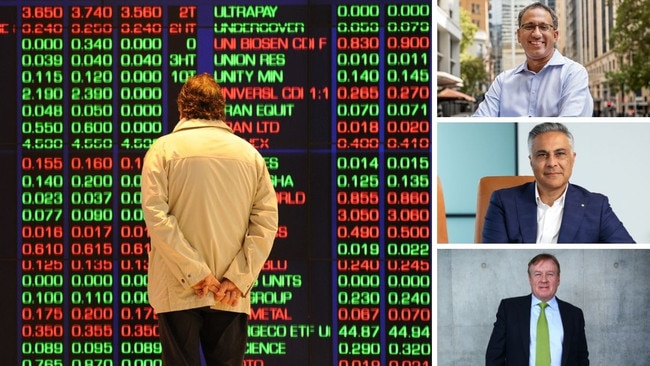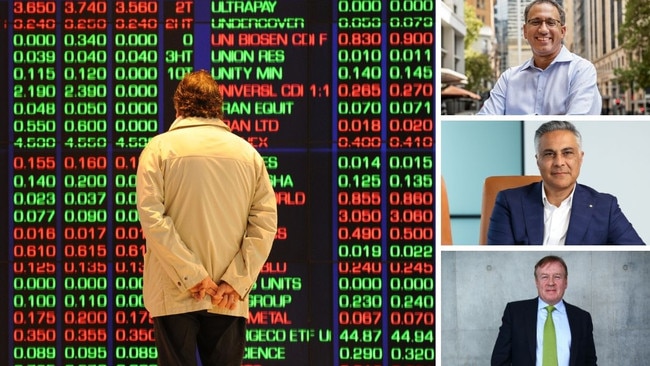Revealed: best and worst IPOs in a bumper year for ASX floats
With ASX floats hitting levels not seen since the height of the mining boom, some smart investors have been rewarded by significant returns. SEE THE LIST.

Business
Don't miss out on the headlines from Business. Followed categories will be added to My News.
The number of companies hitting the ASX is on track to reach its highest level since 2007 – at the height of the mining boom – with 250 listings expected by the end of the year.
And next year is looking just as strong, with a slew of companies preparing to come to market in the next six months, deal-makers say.
Already, more than 207 listings have hit the ASX since January, the vast majority – about 170 – initial public offerings, with the rest made up of stapled securities, secondary listings and debt listings. In coming weeks, at least 40 more are set to debut, according to the market operator.
“This will probably be our third-biggest year ever for listings,” the ASX’s group executive for listings, Max Cunningham, said. “Normally we have about 120 listings in any given year. And in a slower year that might be 100.”
While the number of listings is at a 14-year high, companies going public have also raised the highest amount in a single year – more than $12bn – since 2014. And a record eight companies listed with market values above the billion-dollar mark.
The booming IPO market, sparked by private companies rushing to take advantage of a market flush with cash, has been replicated the world over, with global listings smashing their previous record six weeks out from the end of the year. Already, more than 2800 businesses and special purpose acquisition companies, or SPACs, have raised more than $US600bn ($840bn) in global IPOs this year, smashing the previous record set in 2007, according to Bloomberg.
Alongside healthy demand from investors searching for yield and record profits of listed companies, the recent mining boom had contributed to the strong showing in the local market this year, Mr Cunningham said.
Indeed, it is the best IPO year for mining stocks in 14 years, with materials companies making up about 60 per cent of listings.
Resources firms also make up the bulk of the final floats of the year, among them nickel and gold miners 8 AU, Panther Metals and DMC Mining, all of which are set to debut in December.

Alongside the miners, other IPO hopefuls readying for their market debut include video camera technology company BirdDog and IT services company Atturra, formerly FTS Group.
While it is the best year for listings since the global financial crisis hit, the market is still shy of the record set in 2007, when a total 313 listings hit the boards. But this year’s IPOs were bigger than had been seen before, PwC deals business leader Rob Silverwood said.
“Looking at some of the key industries, financial services has been a really big one this year. There’s a combination of fintech and the more traditional businesses, like Judo and Latitude,” Mr Silverwood said.
“Health and tech have also been dominating (in IPO listings). And all this correlates to what we’ve seen with broader M&A activity concentrated around the really hot sectors.”
There had also been a clear divergence away from the traditional dual-track process companies had taken in the past, he said. “People seem to be fixated on an IPO path, whereas previously we’ve seen companies say they might do a trade sale, or go down that dual track. It’s been more clear cut this year.”
The biggest IPO of 2021 was equity manager GQG Partners, which raised $1.2bn from investors at $2 a share, giving it a market cap of $6bn. APM Human Services International, PEXA, Latitude, Judo, Ventia, SiteMinder and Pepper Money round out the companies that listed with a market cap in excess of $1bn.
The most successful IPO so far, based solely on the share price performance, is minerals explorer Kuniko, whose shares have surged more than 500 per cent from the 20c offer price.
While the most successful, it’s also one of the more controversial, with pump-and-dump fears airing shortly after it listed.
When Kuniko debuted in August, it rocketed more than 300 per cent in its first days. And it kept going, eventually rising to a high of $3.23 in early September, a 1500 per cent jump on its offer price. But posts on encrypted messaging app Telegram referring to investors “pumping” the stock caught the market operator’s attention, forcing the company to address the concerns and defend its use of a paid investor relations services provider, S3 Consortium, to promote the minerals explorer.
S3 also did well out of the deal, with the group handed 1.875 million shares for promoting the company. Those shares are escrowed for two years from the listing date.
Next on the list of top IPOs for the year is battery play Lithium Energy, whose shares have rocketed 340 per cent from the 20c-a-share offer price amid soaring lithium prices and bullish market predictions on electric-vehicle demand prospects.
Currently trading around 88c, Lithium Energy has exposure to lithium and graphite, both of which are used in lithium-ion batteries. The company, spun out of Strike Resources, is developing its flagship Solaroz lithium brine project in Argentina and the Burke graphite project in Queensland. It is betting that it can mirror the success of its neighbour in Argentina, Orocobre, in its own lithium project.
Rounding out the top five IPOs of the year are 92 Energy, Australian Rare Earths and Global Resources, showcasing the extent of the materials and clean energy boom.
Uranium miner 92 Energy is up 200 per cent on its 20c-a-share offer price thanks to a discovery in its Gemini project in Canada.
The company’s managing director. Siobhan Lancaster, described the September discovery in only its fourth drill hole in its drilling program, as “extraordinary”. The market apparently agreed, sending its share price flying to as high as 94c before it pared some of the gains.
While materials companies top the leaderboard in share price gains, the sector is also vying to win the wooden spoon for the worst performance of the year.
Right now, last place goes to technology-driven recruitment company Hiremii. The company’s share price has steadily tumbled since its May IPO and is currently trading at 6.8c, down 66 per cent on the 20c-a-share offer price.
While it staged a disappointing debut, lockdowns in NSW and Victoria hindered its quarterly revenue numbers, while revenue is set to take a further hit after the jobs company lost a key contract with UGL.
Another among the worst performers is iron ore miner Juno Minerals, whose debut in May coincided with the beginning of the plunge in the iron ore price.
Just before Juno listed, iron ore was trading at $US233 a tonne. It is currently at $US95 a tonne. Juno’s shares have plunged more than 50 per cent from its 25c-a-share offer price.
Of the bottom five IPOs of the year, two – Juno and Pearl Gull Iron – are iron ore explorers.
PwC expected the listing boom to press on next year, with a “strong pipeline” of IPO hopefuls, Mr Silverwood said. Considering the months-long lead time of preparation for a listing, this suggests the market is looking solid until at least mid-2022.
“The pipeline doesn’t look different to what we would have been saying it looked like 12 or six months ago,” PwC deals partner Andrew Parker said. “There’s a healthy, healthy pipeline there.
“Looking at the macro factors, corporate earnings are pretty good; businesses are generally doing quite well and rates are low.
“Yes there’s been some discussion about inflationary pressures, but there’s not much appetite from central banks or the Reserve Bank for significant interest rate rises in the near term. And you’ve got these big walls of capital coming out of superannuation funds.”
Originally published as Revealed: best and worst IPOs in a bumper year for ASX floats



